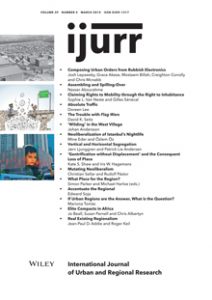The increasingly disputed concept of gentrification-induced displacement is combining with the argument that the poor benefit from social mix to produce a theoretical case for ‘positive gentrification’. The notion that new middle-class residents not only attract more investment but bring opportunities for ‘upward social mobility’ to low-income people who manage to stay in gentrifying areas has become policy orthodoxy. While there are scholarly challenges to the extent of these benefits, the disadvantages of imposed social mix on low-income communities even where they are not physically displaced remain under-researched. This article helps to fill this gap by reporting on research into the experience of long-term low-income residents of gentrifying neighbourhoods who managed to stay put. The research explores notions of social mix, place and displacement among residents of secure community housing in Melbourne, Australia (the equivalent of small-scale social housing in Europe and North America) with the object of establishing whether the absence of physical displacement is sufficient to ameliorate gentrification’s negative impacts. The findings demonstrate that transformations in shops and meeting places, and in the nature of local social structure and government interventions, cause a sense of loss of place even without physical displacement.

